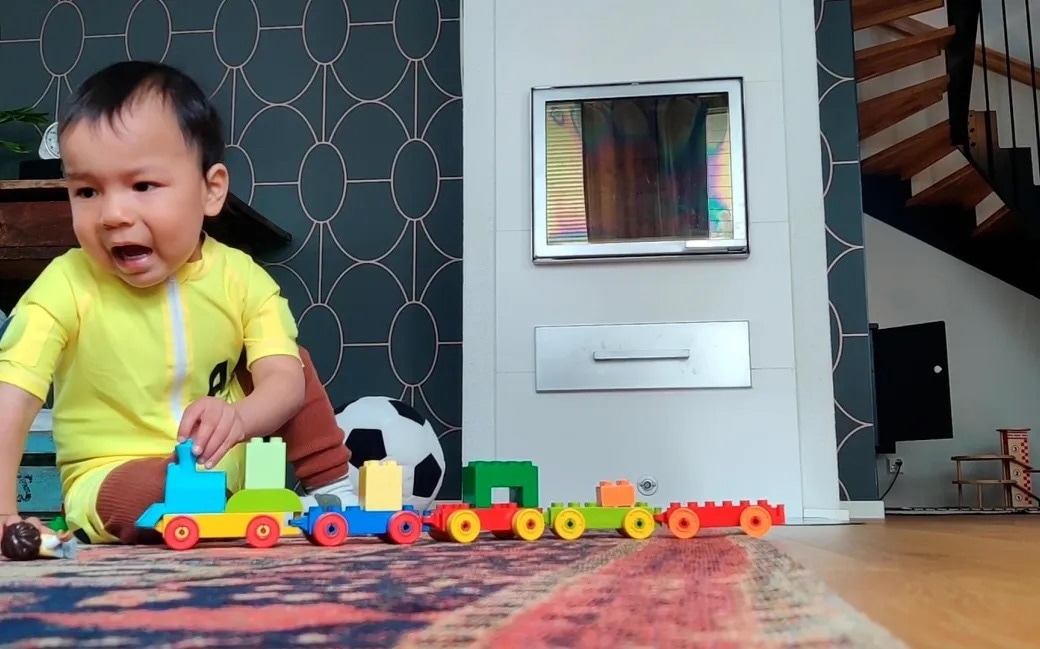A unique wearable for infants has been created for the consistent evaluation of motor skills during the early development phase by a Finnish research team at the BABA Center, Helsinki Children’s Hospital.

Image Credit: University of Helsinki
The smart jumpsuit, referred to as MAIJU (Motor Assessment of Infants with a Jumpsuit), is a wearable medical device that is fitted with several movement sensors, which assist in evaluating and estimating the neurological development of children.
In their latest research, the team measured infants at 5 to 19 months of age using the MAIJU jumpsuit during unplanned playtime, typically in the home environment of the child.
At the start of the study, the movements and postures of the infants were detected visually from a videotape using a motility description system developed exclusively for this research. This information was then used to teach a machine-learning-based algorithm to identify the same movements and postures for every second of each child’s playtime at a precision that matches the visual evaluation by a skilled expert.
The development of the MAIJU wearable required a technical breakthrough in the development of machine learning algorithms for this purpose. This was achieved by combining a new kind of motility description with state-of-the-art deep learning solutions.
Dr. Manu Airaksinen, Post-Doctoral Researcher and Leader of Technical Development, BABA Center, University of Helsinki and Helsinki University Hospital, Finland
New methods for studying neurological development
The MAIJU jumpsuit and the related analytical solutions enable both the evaluation and monitoring of a child’s motor maturation at unparalleled precision. This advancement can be manipulated in a number of ways, for instance in early clinical investigations and other developmental evaluations. It also renders it possible to compute efficacy in different kinds of medical therapies and treatments.
Our research shows that it is very possible to assess the motor development of an infant outside of a hospital or special laboratory setting. A particular advantage of the MAIJU methodology is the fact that it allows us to carry out developmental assessments in the natural environment of the child, such as a home or daycare.
Sampsa Vanhatalo, Professor in Physiology, University of Helsinki
Vanhatalo is also a consultant in clinical neurophysiology, at Helsinki Children’s Hospital, Helsinki University Hospital.
“Methods of this kind are urgently needed to support the research and novel therapeutic innovations of early neurological development,” confirms Leena Haataja, professor in child neurology.
When neurodevelopmental delays and associated challenges are detected earlier, better support can be provided for the child’s future development and lifelong neurocognitive performance.
Children Move to Learn
It is, at present, universally accepted that a young child’s motor development is not autonomous of all other neurocognitive progress. The strong natural drive of the child to move has risen from a clear necessity: the child has to move a lot to gather experience and learn from the immediate environment.
It is therefore important to encourage children to move as naturally and as much as possible in everyday life situations.
Leena Haataja, Professor in Pediatric Neurology, Children's Hospital, Pediatric Research Center, University of Helsinki and Helsinki University Hospital, Finland
A child with motor or other neurological difficulties will require special therapies or support, which ideally would work best if they are part of the child’s daily life and surroundings. The MAIJU smart jumpsuit makes it promising to find better therapeutic approaches in such situations and to evaluate the effectiveness of such therapies.
New Applications for Wearables
Designing a smart wearable for a medical application is a challenge generally tougher than commercializing a consumer product. Vanhatalo feels that their fruitful work in wearable development has a wide-ranging global impact and an optimistic future.
“Our methods can be automatised and scaled up for very wide use. It is also possible that our technology could be adapted for developing wearable solutions to help other patient groups, such as older children or even elderly people.”
Journal Reference:
Airaksinen, M., et al. (2022) Intelligent wearable allows out-of-the-lab tracking of developing motor abilities in infants. Communications Medicine. doi.org/10.1038/s43856-022-00131-6.